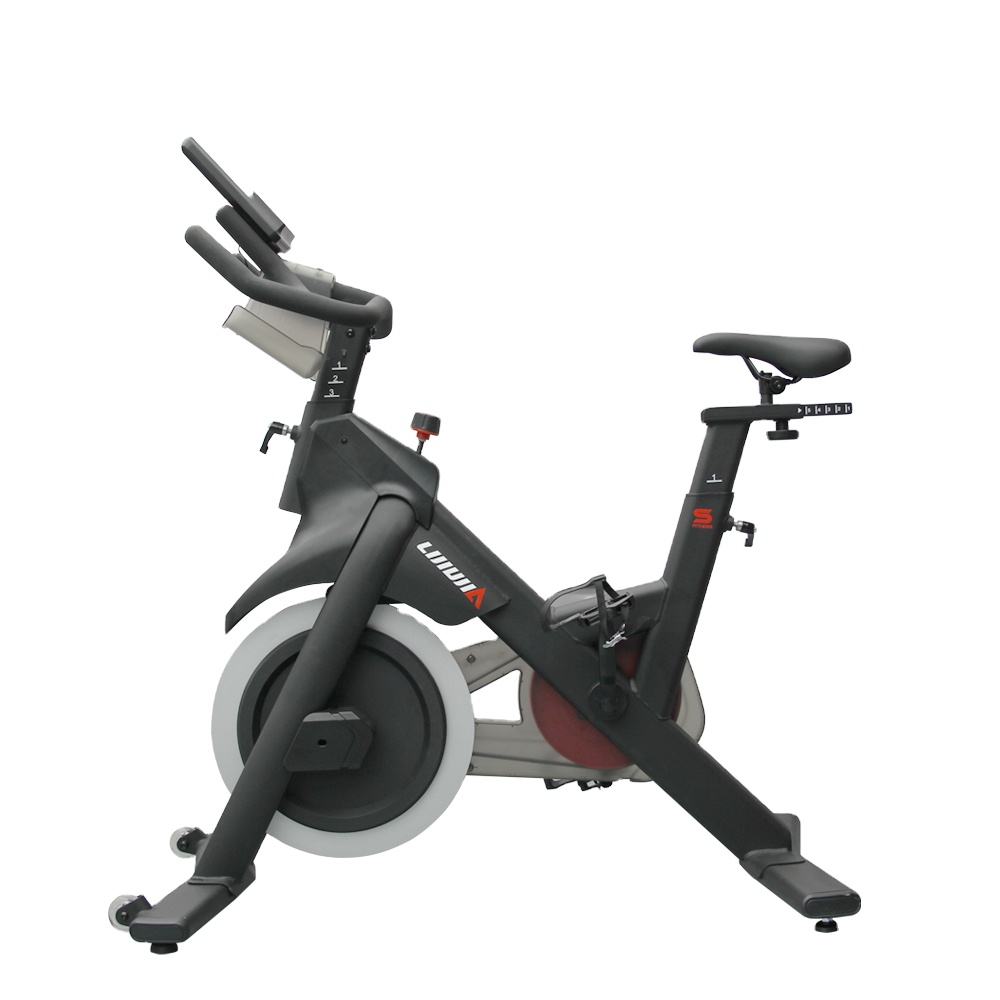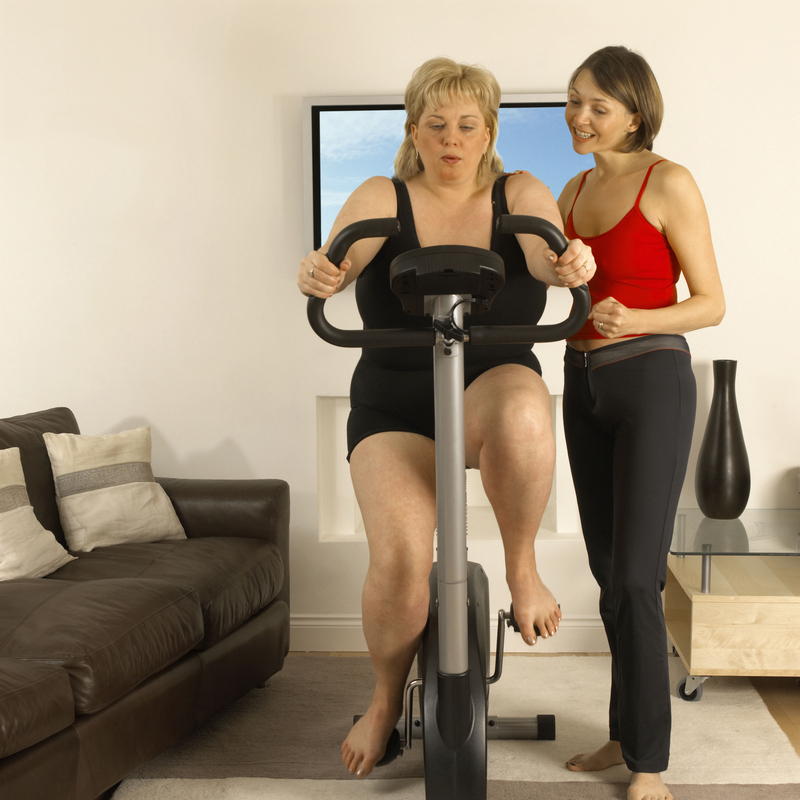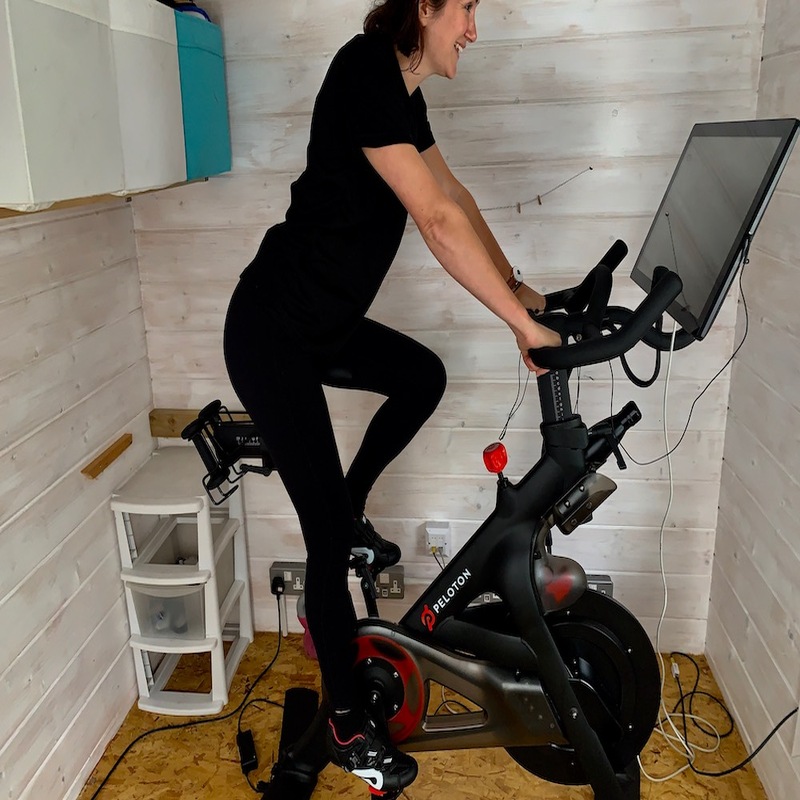Major Muscle Groups Used in Cycling
Cycling is a comprehensive bicycle muscles worked that engages numerous muscles. Whether you’re cycling outdoors or on a stationary bike, understanding the major muscle groups involved can help enhance your performance and prevent injuries.
Quadriceps (Front of the thigh)
The quadriceps are crucial for cycling. They power the downstroke of the pedal cycle. These muscles are among the strongest in your body, located at the front of the thigh. Regular cycling helps these muscles become very toned.
Hamstrings (Back of the thigh)
Located at the back of the thigh, hamstrings work opposite the quadriceps. They help pull the pedal up in the recovery phase of cycling. Strong hamstrings balance the power of the quadriceps and are crucial for efficient pedaling.
Gluteus muscles (Buttocks)
The glutes provide significant power during cycling, especially when climbing or sprinting. These muscles include the gluteus maximus, medius, and minimus. They are essential for hip stability and power during the pedal stroke.
Calf muscles (Back of the lower leg)
Your calf muscles, consisting of the gastrocnemius and soleus, aid in the downstroke and stabilize the ankle and foot during cycling. These muscles are visible at the back of the lower leg and often become well-defined with regular cycling training.

Supportive Muscles Engaged in Cycling
Cycling isn’t only about your legs. Supporting muscles also play a big role. Knowing which muscles support cycling can help you train better and prevent injuries.
Core Muscles (Abs and back)
The core muscles include your abdominals and back muscles. When you cycle, these muscles stabilize your upper body. This keeps you in control, especially on challenging rides. A stable core also helps prevent back pain.
Upper Body Contribution (Arms and shoulders)
While cycling mainly uses the lower body, your upper body muscles still work hard. Your arms and shoulders help support you on the bike. They keep you balanced and control the bike’s handlebars. This is more evident when you are cycling uphill or standing out of the saddle.
Tibialis Anterior (Front of the shin)
The tibialis anterior runs along the front of your shin. This muscle helps stabilize your ankle during the pedal stroke. This can result in a smoother and more efficient ride.
Adductor and Abductor Muscles (Inner and outer thigh)
Your inner and outer thigh bicycle muscles worked to stabilize your legs during cycling. Adductor muscles pull the leg in toward the body’s midline, while abductors push it away. This balance helps maintain proper leg alignment and efficient pedal strokes.
Different Styles of Cycling and Muscle Engagement
The way you cycle can significantly affect which muscles are engaged. Various styles, such as road cycling, mountain biking, and indoor cycling, challenge different muscle groups in distinct ways. Understanding these differences can help you tailor your cycling regimen to meet your fitness goals.
Road Cycling: Focus on Endurance and Power
Road cycling typically emphasizes endurance and power. Riders often experience sustained performance over longer distances. This style primarily engages the quadriceps and hamstrings, along with the core and upper body for stability.
To excel in road cycling, you may want to focus on endurance-building workouts. Long rides with varying intensity can help develop both aerobic and muscular endurance. Additionally, structured interval training can improve your power output, allowing you to tackle steeper climbs or sprint sections on the road.
Mountain Biking: Engagement Across Diverse Terrain
Mountain biking offers a varied experience compared to road cycling. The uneven terrain and technical features require greater muscle engagement from the entire body. In this style, the legs work harder, but core strength becomes critical for navigating obstacles.
Moreover, mountain biking requires greater upper body engagement than road cycling. As you navigate rocky trails and steep descents, the arms and shoulders stabilize the bike. Consequently, mountain bikers gain more overall muscle development throughout their ride. Incorporating strength training into your routine can further improve your performance on the trails.

Cycling Technique and Muscle Activation
Cycling correctly is essential for muscle development. Efficient cycling involves more than just pedaling; it’s about how you do it.
Impact of Pedal Stroke Efficiency
Good pedal strokes make cycling smoother. Proper technique uses less energy and prevents injuries. Smooth pedaling engages muscles better, improving performance. Training focuses on the full pedal circle, not just pushing down.
The Role of Cadence and Resistance
Fast pedaling, or cadence, and the right resistance work muscles harder. A combination of high cadence and moderate resistance boosts muscle activation. It also improves cardiovascular fitness without straining muscles.
Positioning and Bike Fit Considerations
A good bike fit is crucial. It helps you use the right muscles and avoid pain. Proper seat height and handlebar position optimize bicycle muscles worked. They also protect joints during long rides. Adjustments can enhance power and efficiency.
Indoor vs. Outdoor Cycling Muscle Activation
Cycling indoors and outdoors offers distinct experiences and challenges for muscles.
Differences in Muscle Use
Indoor cycling ensures consistent use of leg muscles due to controlled environments. Stationary bikes focus more on resistance, impacting how muscle groups like the quads and glutes activate. Outdoors, varying terrain activates additional muscles like the core and arms for balancing and navigating.
The Effect of Environment on Performance
The controlled environment of indoor cycling may improve consistent muscle use and power output. Outdoors, elements like wind and terrain variety challenge and engage the body differently, leading to different muscle stresses. Both environments offer unique benefits to overall cycling performance.

Building Strength and Avoiding Injury
For optimal cycling performance, building strength is crucial.
Importance of Cross-Training and Recovery
Cross-training enhances strength and reduces injury risks. Different activities work various muscles, helping overall balance and fitness. Adequate recovery time is critical to prevent injuries and allow muscle repair. Alternating cycling with activities like swimming, running, or yoga can provide significant benefits.
Effective Warm-Up and Cool-Down Strategies
Always start with a warm-up to prep muscles for cycling. This can include light cycling or dynamic stretches. Cooling down is just as important. It helps muscles relax and clears out lactic acid. A cool-down might consist of gentle stretching or a slow ride.
Stretching and Strengthening Key Muscle Groups
Certain exercises target muscles important for cycling. Planks, squats, and hamstring curls enhance key cycling muscles. Regular stretching improves flexibility and reduces the risk of cramps and injuries. Focus on quad, hamstring, and calf stretches. Consistent practice leads to better muscle function and cycling efficiency.
Muscle Development and Cycling Performance
Understanding how muscles develop with cycling can boost performance and enjoyment.
Role of Genetics and Training History
Genes play a part in muscle growth and cycling success. Your body’s natural makeup might make some muscles stronger from the start. Past workouts also affect how your cycling muscles get stronger. If you have a history with sports or weightlifting, your muscles might grow and recover differently.
Nutritional Considerations for Muscle Growth
Good nutrition feeds muscle growth. Eat enough protein to repair and build muscle. Carbs give the energy needed for hard cycling workouts. Don’t forget healthy fats for overall body function. Stay hydrated; water is key for healthy muscles. Also, give your body the right vitamins and minerals from a variety of foods.
Guidelines for Balanced Cycling Training
To get stronger and perform better, mix up your cycling routine. Add some faster, high-intensity rides to your training. But balance these with longer, slower rides too. This keeps your muscles guessing and improves endurance and speed. Listen to your body and rest when needed. Overtraining can lead to injuries and slower muscle growth. Include strength training; it’s key for better cycling power and injury prevention. Finally, always warm up and cool down to care for your muscles.


